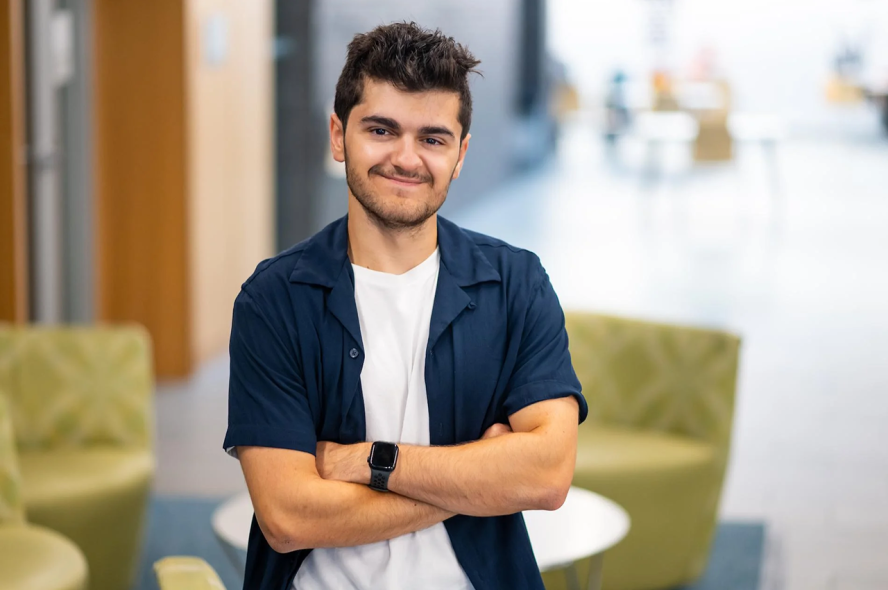Where Engineering Pathways Begin: Andres Antonio, E23, EG24

Andres Antonio, from Brooklyn, New York, is on track to earn an M.S. in Human Factors Engineering, a one-year program that builds on his B.S. in engineering psychology (summa cum laude) and minor in dance. As an undergraduate, he co-directed Spirit of the Creative, Tufts’ hip hop and choreography dance team, and taught Dance Fit classes for the Tufts University Social Collective. He also took his passion for diversity, equity, inclusion, and social justice into the classroom by creating and teaching the Ex-College course DEI in Video Game Representation. He was also active in the Association of Latin American Students.
“I came to Tufts thinking that I was going to major in computer science, but after an intro course I realized that wasn't for me. I was more interested in getting into design and how engineering intersects with people in the world. Then I heard about engineering psychology, and I knew: This is for me. The first class that inspired me was Computer Aided Design, taught by Ryan Marshall [part-time lecturer in civil and environmental engineering]. I loved the collaboration between the software side, the design side, the people sides, how all these fields came together.
“Human factors bridges that gap between people and products we use. We are designers for people and for our communities, so it questions everything you might otherwise just take for granted: What are the different ways that we can design products? How can we make things more efficient? How can we think about what helps communities thrive? What are all the things that we could be doing to make sure that we're providing better spaces, better products? In short, how do we think about what people need, want, and desire? You have to really get to know what products would be genuinely beneficial in daily life.
“I've always had this dance world, and this tech games world, two passions that at first seem to have no connection. Many times, I’ve been told, ‘Wow, that's a really crazy combination!’ But choreography and the human factors process do have a lot in common.
“When I'm choreographing, I'm asking the same questions I ask when I make specific design choices. Who are the people in my dance? What are their strengths? What do they want out of this piece? How am I making formations to make sure everyone's seen, so everyone feels satisfied about giving up their time to be in this performance? How do I feel when it's on stage? What does the lighting look like?
“So, while dance and engineering are different fields, they both definitely complement each other and help me develop skills that I can apply to both fields. I'd love to be able to combine them somehow as I go forward. That’s the dream.”
Read more student profiles in Where Engineering Pathways Begin by Laura Ferguson/Tufts Now.